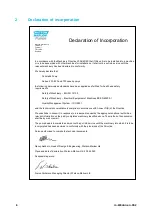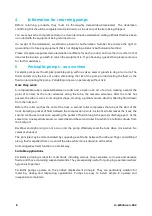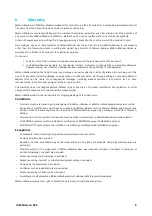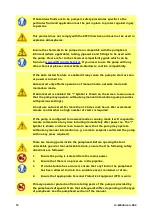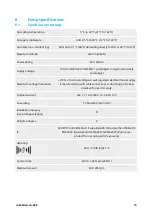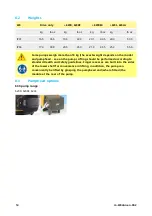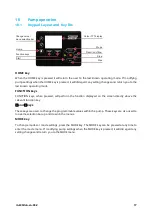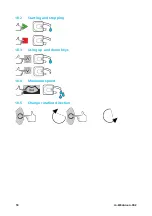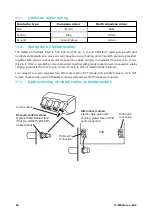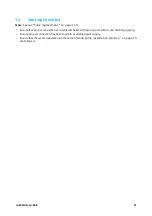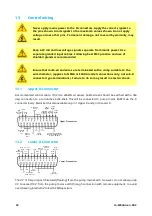
4
Information for returning pumps
Before returning products, they must be thoroughly cleaned/decontaminated. The declaration
confirming this should be completed and returned to us in advance of the item being shipped.
You are required to complete and return a decontamination declaration stating all fluids that have been
in contact with the equipment being returned to us.
On receipt of the declaration, we will issue a Returns Authorisation Number. We reserve the right to
quarantine or refuse any equipment that is not displaying a Returns Authorisation Number.
Please complete a separate decontamination certificate for each product and use the correct form that
denotes the location you wish to return the equipment to. If you have any queries then please contact us
for further assistance.
5
Peristaltic pumps - an overview
Peristaltic pumps are the simplest possible pump, with no valves, seals or glands to clog or corrode. The
fluid contacts only the bore of a tube, eliminating the risk of the pump contaminating the fluid, or the
fluid contaminating the pump. Peristaltic pumps can operate dry without risk.
How they work
A compressible tube is squeezed between a roller and a track on an arc of a circle, creating a seal at the
point of contact. As the roller advances along the tube, the seal also advances. After the roller has
passed, the tube returns to its original shape, creating a partial vacuum which is filled by fluid drawn
from the inlet port.
Before the roller reaches the end of the track, a second roller compresses the tube at the start of the
track, isolating a packet of fluid between the compression points. As the first roller leaves the track, the
second continues to advance, expelling the packet of fluid through the pump’s discharge port. At the
same time, a new partial vacuum is created behind the second roller into which more fluid is drawn from
the inlet port.
Backflow and siphoning do not occur, and the pump effectively seals the tube when it is inactive. No
valves are needed.
The principle may be demonstrated by squeezing a soft tube between thumb and finger and sliding it
along: fluid is expelled from one end of the tube while more is drawn in at the other.
Animal digestive tracts function in a similar way.
Suitable applications
Peristaltic pumping is ideal for most fluids, including viscous, shear-sensitive, corrosive and abrasive
fluids, and those containing suspended solids. They are especially useful for pumping operations where
hygiene is important.
Peristaltic pumps operate on the positive displacement principle. They are particularly suitable for
metering, dosing and dispensing applications. Pumps are easy to install, simple to operate and
inexpensive to maintain.
8
m-630dun-en-08.2
Summary of Contents for 630 Du
Page 81: ...m 630dun en 08 2 81 ...






